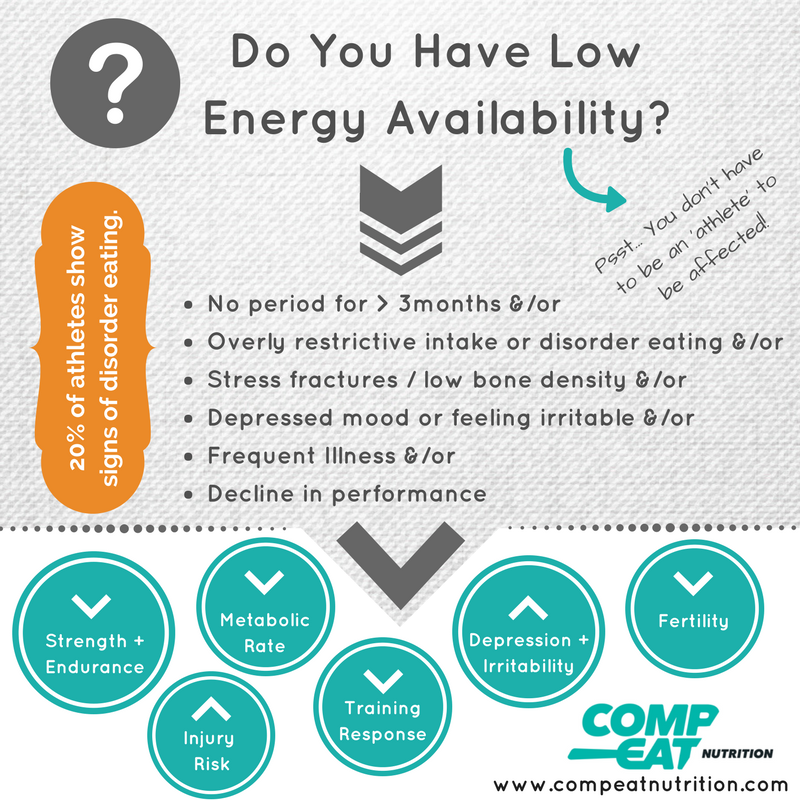Nutrition Challenges of the Female Athlete
There are many perks to be a female athlete – my favourites have to got to be the feeling of having a strong and capable body, accomplishing achievements in performance I never imagined possible, and of course the joys of ‘chicking’ some of the guys in training.
However, we are also pretty damn talented at pushing ourselves beyond our limits and sometimes ignoring some important signs that our bodies give us to tell us that we may have gone to hard or too far. So what happens to our bodies when our nutrition intake doesn’t match our training demands?
If your energy intake compared to your training demands is consistently out of balance – both acutely (e.g. to make racing weight) or chronically – we may not have enough energy to cover the costs of our training, daily living and metabolic demands. This can then impact your metabolic rate, bone health, fertility, immune function and also the well being of your heart and mental health. In terms of performance, it can impact your adaptation to training while also leading to a decline in endurance capacity, strength and speed.
Here is the real kicker, this isn’t only a syndrome for the extremely lean athlete. Although low body fat is a risk factor, it is not a diagnosis – all athletes are at risk of the side effects of inadequate energy intake to support training demands and it can exist even with adequate body fat levels!

RED-S Syndrome
If you have heard of the Female Athlete Triad, RED-S is similar to this. ‘Relative Energy Deficiency in Sport’ (RED-S) has been formed to encompass a more complete picture of the symptoms related to an imbalance between dietary intake and energy expenditure (food vs. training).
Energy Availability refers to the amount of energy remaining after all your metabolic processes and needs for exercise / training / competition have been accounted for.
Being in a state of low energy availability could be intentional (to achieve a specific body comp for performance), inadvertent (not adjusting intake to meet needs for training) or compulsive (due to disordered eating patterns).
Poor Energy Availability - What can it look like?
It is really important to highlight that poor energy availability doesn’t only happen due to diagnosed eating disorders, such as Anorexia Nervosa OR only to the extremely lean athlete. Although this can be one of the diagnosing factors, an imbalance between food intake and training demands can happen to any of us!
For the majority reading this, it is likely accidental due to the time constraints that come with trying to balance training with work, family and life commitments. These challenges can prevent us from having the time to consider our requirements each day and stop us from adjusting our intake as our training demands increase.
For many others, a lot can be attributed to the explosion of social media wellness warriors or ‘healthy eating’ pressures. Unfortunately, the rapid growth in social media has given voice to many well-meaning individuals promoting differing diet types, detoxes, crazes or just simply a pressure for ‘clean eating’. These pressures can lead to disordered eating behaviours that start well, however grow in restriction and obsession overtime – often leading to this imbalance in energy.
So you can see, poor energy availability can present in all body shapes, all sports and at many different competition levels!
Signs & Symptoms
If these symptoms ring true to you or set off alarm bells for caution, it is really important to follow up with a sports medicine physician. From there, management will include discussions with a sports dietitian and may also involve an exercise physiologist &/or sports psychologist as needed. Treatment will focus on correcting your energy balance while also creating a long-term environment that encourages a healthy, balanced relationship with food and nutrition.
Some of the signs and symptoms to be aware of for follow-up include:
- Amenorrhea (cessation of menstruation for more than 3 months); an/or
- Delayed menarche in young active females (absence of your first menstruation by age 16); and/or
- Disordered eating patterns that may include overly restricting intake or food groups, skipping meals or using unsafe weight loss methods; and/or
- Poor bone health with a below normal Bone Mineral Density (BMD); and/or
- Depressed mood or irritability; and/or
- Susceptibility to ongoing illness (poor immune function); and/or
- Reduced performance, recovery and adaptations to training.
If you would like some guidance into the best way forward in fueling your training and competition demands, we are always ready for a chat – either head to our ‘contact’ page or email me directly: alicia@compeatnutrition.com

ALICIA EDGE HEAD SPORTS DIETITIAN
Alicia is the head Advanced Sports Dietitian at Compeat Nutrition. She is also a mum and triathlete, so advice extends beyond the basics and is instead focused on providing effective and achievable nutrition for both training and racing.